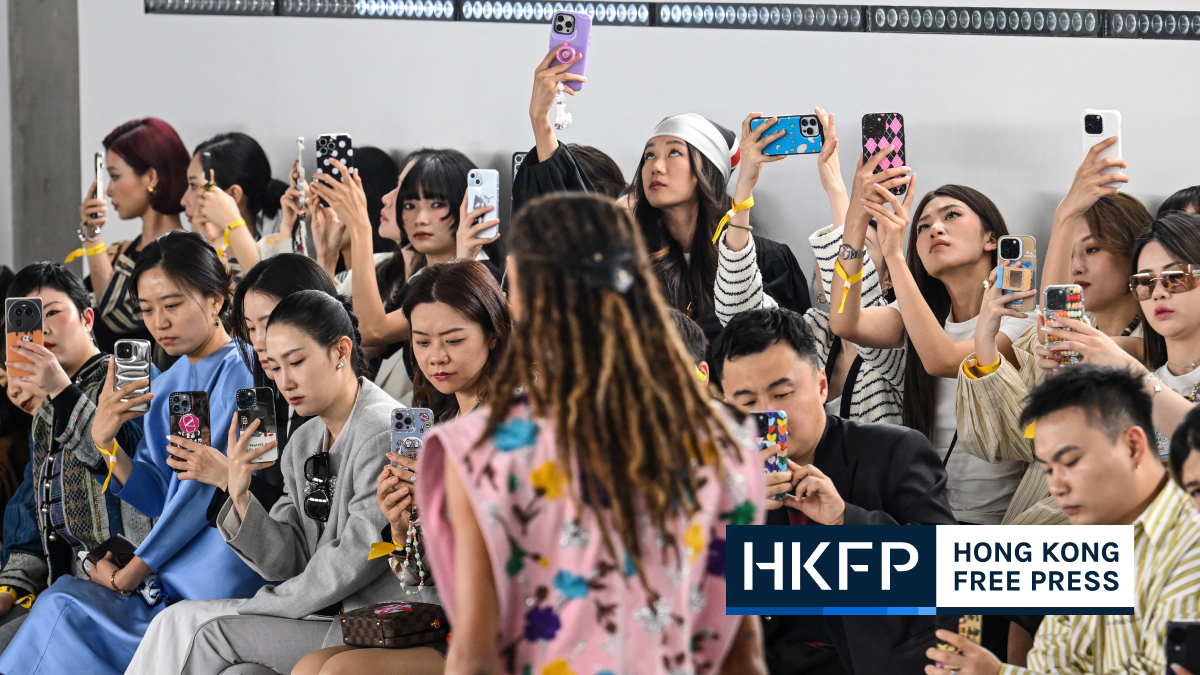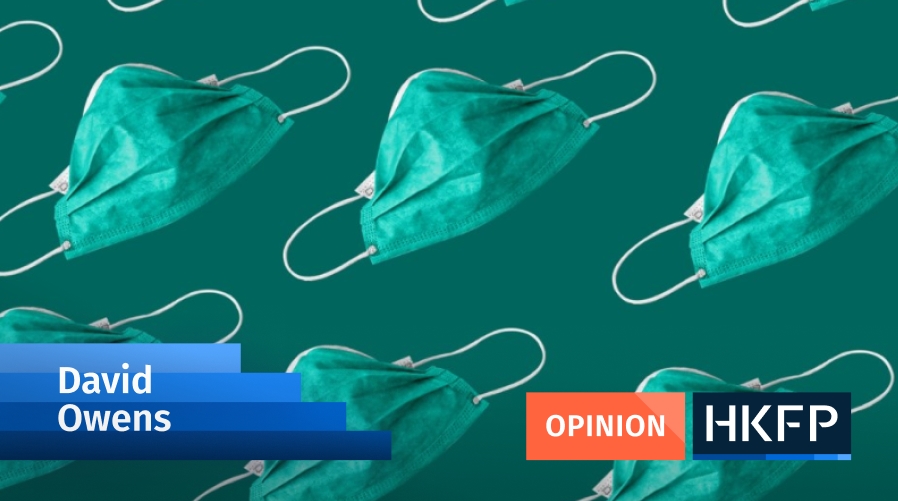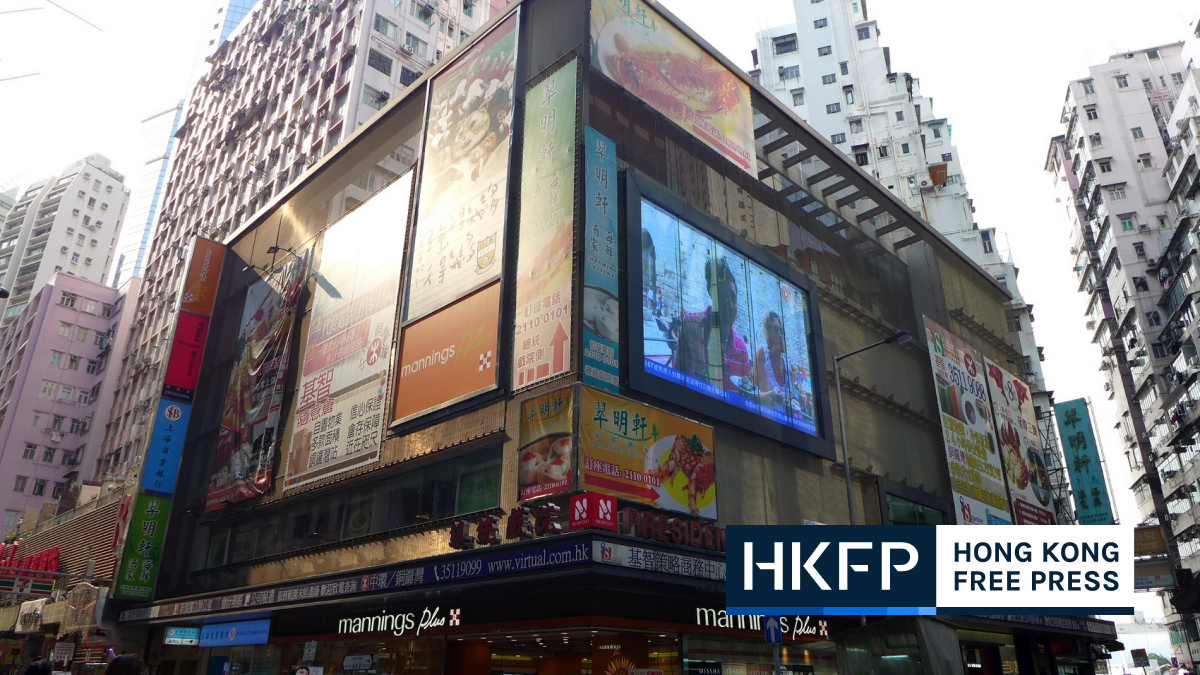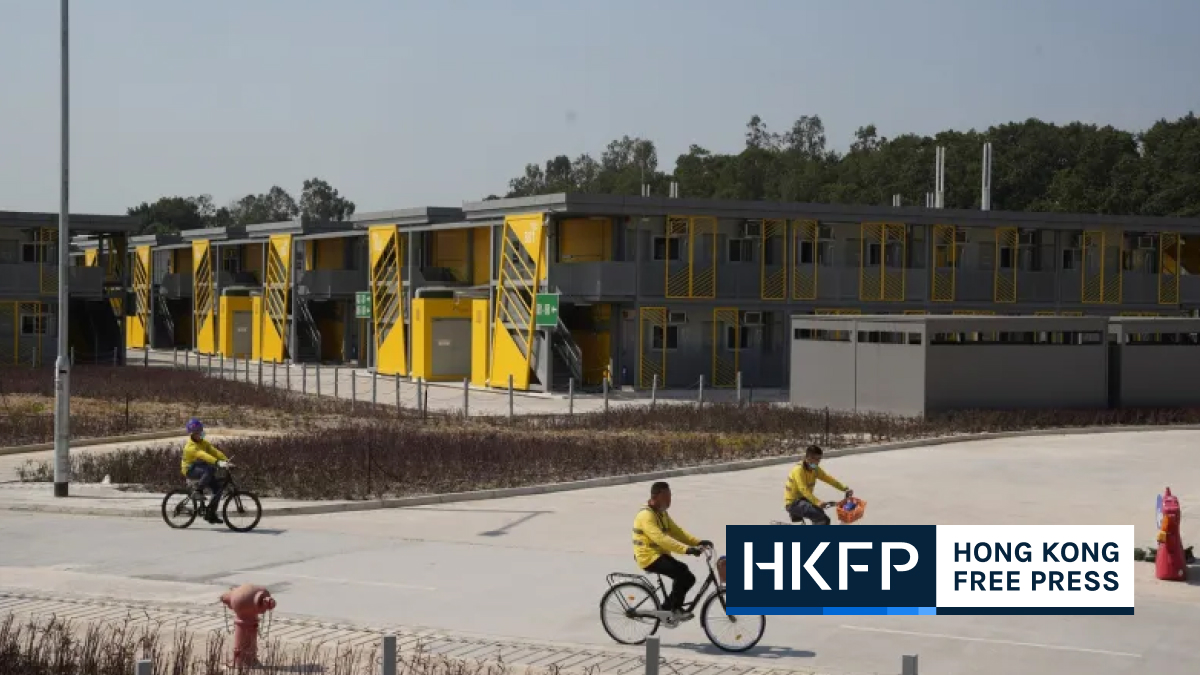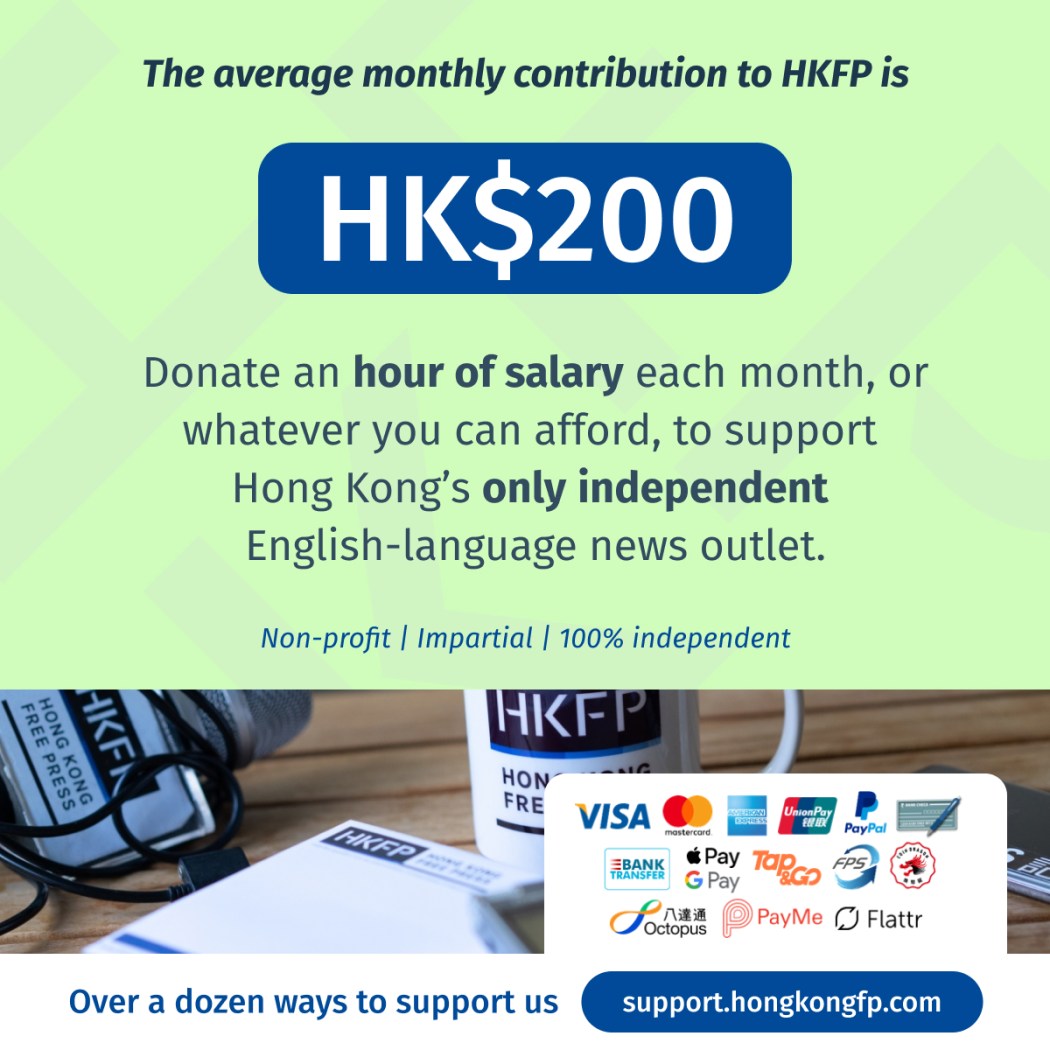Analysis conducted by FactWire suggests that only 16.5 per cent of Hong Kong’s population is currently protected against infection from the Omicron variant of Covid-19, when factors such as the percentage of vaccinated residents, the type of vaccine received, and waning antibody levels are taken into consideration.
According to research from the University of Hong Kong (HKU), protection against infection is estimated to be capped at around 50 per cent, even when 95 per cent of the population has received three doses of the vaccines.
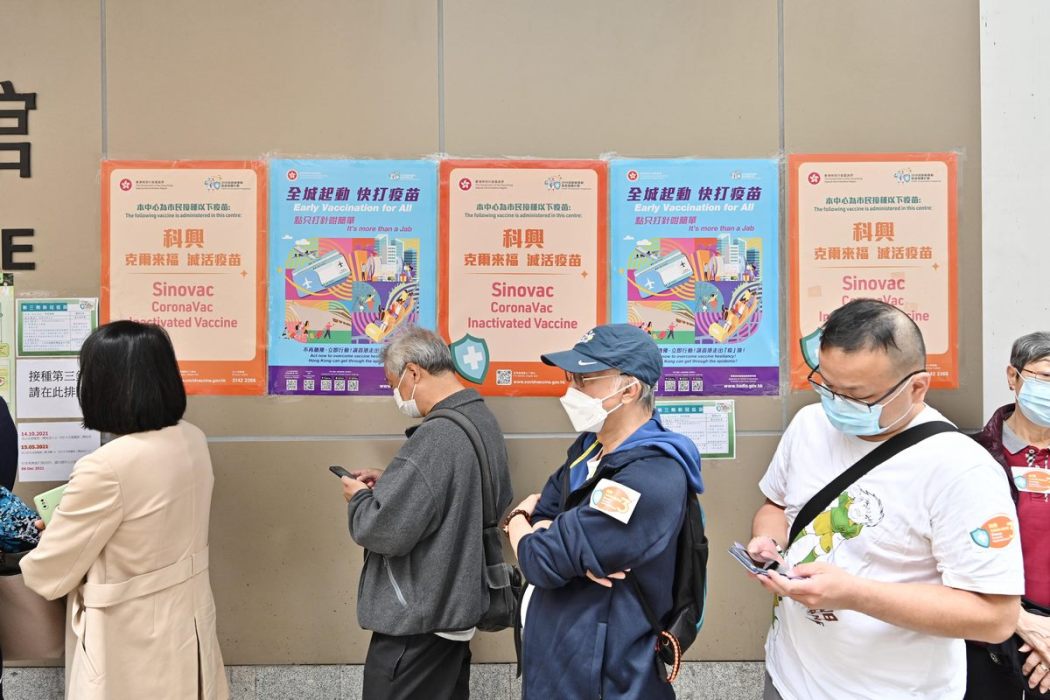
This is due to the limited effectiveness of the Chinese-made CoronaVac vaccine, commonly known as Sinovac – one of the two options available in Hong Kong – against infection from the Omicron variant. Almost half of those receiving their first or third jabs in February opted for Sinovac, which may prevent severe illness but not infection.
Hong Kong’s fifth wave, which is led by the more transmissible Omicron variant, began in December last year when an infected Cathay Pacific crew member triggered a local cluster outbreak at a restaurant by the name of Moon Palace. As of February 23, 62,617 fifth-wave cases have been identified, of which 61,900 were local – almost five times the number of positive cases in all four previous waves combined. At least 188 deaths have been identified in the fifth wave.
The vaccine pass programme, which came into effect last Thursday, will, by June, require everyone to have had three jabs of a vaccine in order to enter most public premises. The government has said that this is to “raise the vaccination rate with a view to strengthening the immune barrier against the epidemic and resuming Hong Kong people’s normal life [sic] as soon as possible.”

Over 1.3 million vaccine doses were administered in the first 20 days of February. Almost 50 per cent of the first and booster doses administered in this period of time were Sinovac, five percentage points more than that last month.
3 doses of Sinovac only 36% effective
The HKU School of Public Health, a designated WHO Collaborating Centre for Infectious Disease Epidemiology and Control, published a report containing a model of Hong Kong’s fifth wave of Covid-19 on February 10. It evaluates the city’s control measures by estimatingthe overall protection of Hong Kong’s population based on the effectiveness of possible vaccine combinations, the ratio of vaccine types administered, and the local vaccination rate.
Vaccine effectiveness is the percentage of immunity it induces, which may change over time. For example, if 50 per cent of the population receives a vaccine that is 80 per cent effective, the protection to that population would be 40 per cent.
According to the HKU report, current vaccine-induced protection against Omicron infection is very limited because the effectiveness of just two doses of either Sinovac or BioNTech against Omicron infection is low, even negligible, three months after the second dose.

However, after receiving a booster, the effectiveness of three doses of the BioNTech vaccine may be as high as 89 per cent, declining to 86 per cent after three months and 77 per cent after six months, whereas three doses of Sinovac may only be 36 per cent effective, falling drastically to 19 per cent after three months, and standing at a mere 8 per cent after six months.
On the strength of these findings, the report recommended a BioNTech booster regardless of whether a person received BioNTech or Sinovac as their primary inoculation.
The model predicts that the protection against Omicron imparted by the two types of vaccines will gradually rise with vaccine uptake in the coming six months, until it peaks at around 50 per cent around September or October, when 95 per cent of the population is expected to have received three doses of vaccine.
The prediction is shown in the form of graphs in the report. No actual numbers are given.
Only 16.5% protected from Omicron infection
Based on the methodology used in HKU’s report, as well as references from five other local and overseas studies on Sinovac and BioNTech, FactWire conducted an analysis on the actual level of protection Hong Kong could achieve under the current vaccination arrangements.
As of February 20, 70.3 per cent of the Hong Kong population aged three or above – some 5.11 million people – had received at least two doses of vaccine. Of that cohort, 1.46 million had received three doses.
Citizens are allowed to choose between the Sinovac and BioNTech vaccines, including the option of a heterologous booster, a vaccine of a different type than their primary inoculation. This results in four possible vaccine histories, each providing a different level of coverage.
Although the numbers for people who received the first, second and third dose of vaccine are publicly available, the government has refused to provide the number of people who opted for a heterologous booster.
FactWire, following the aforementioned HKU model, estimates that 20 per cent of each of the groups primarily vaccinated with Sinovac or BioNTech will select a heterologous booster. The ratio of people primarily vaccinated with BioNTech to Sinovac, 3:2 at the moment, will also be assumed to remain constant.
The rates of antibody level decline are also taken into account. FactWire grouped the vaccinated population according to time from their last injections to determine the efficacy of each vaccine over time. For example, as of February 20, 320,000 people had received their third dose of Sinovac within the past three months.
Results from FactWire’s analysis show that the protection rate as of February 20 against the Omicron variant is just 16.5 per cent. In other words, only 16.5 per cent of the people in Hong Kong are protected from infection by the Omicron variant.
By Factwire’s calculation, Hong Kong’s protection against severe Omicron illness stood at 44.7 per cent on February 7, while an HKU report gave a figure of 43 per cent. FactWire estimated that that coverage had grown to 48.31 per cent by February 20.
Hong Kong is currently 58.07 per cent protected against the original coronavirus strain, based on a joint study published last year on waning antibody levels after vaccination by HKU and the Hong Kong Red Cross Blood Transfusion Service.
Noting that around 70 per cent of the population had already received two doses of vaccine, the results suggest that around 890,000 vaccinated citizens have already lost protection due to decline of antibody levels.
The vaccination rate surged in the week of February 20, averaging 86,325 doses administered daily. Assuming this rate of vaccine uptake continues, 95 per cent of the population will have received at least two doses of vaccine and 52.2 per cent three doses by the end of April.
Despite expecting more people to be vaccinated, the protection rate against Omicron infection will only reach 39.71 per cent by the end of April if the ratio of citizens choosing BioNTech to Sinovac remains at 3:2, as it now stands.
If the daily uptake remains the same, the rate of three-dose-vaccination may reach 95 per cent by the end of October. That is, nearly 6.9 million people will have received a total of over 20 million doses of vaccine. The protection rate against Omicron infection by that time is forecasted to be 52.83 per cent – a figure very close to what is shown in HKU’s model.
Vaccines reduce viral load
Gabriel Leung, lead researcher of the HKU report and HKU’s Dean of Medicine, said that vaccination could only hope to lower the virus’ effective reproductive number by 11 per cent, from 7.2 to 6.4. He did not speak of the efficacy differential between Sinovac and BioNTech.
In a press conference held on Thursday, FactWire asked Leung to comment on Sinovac’s limited effectiveness and the effect of its wide uptake on the overall level of protection available to Hong Kong. He began by saying that the T-cell responses induced by any type of WHO-approved vaccine – including Sinovac – are 70 per cent to 90 per cent effective in preventing severe illness and death, albeit allowing that BioNTech is more effective against Omicron in preventing infection.
While antibody levels produced by any vaccine begin to wane after three months, he said, the later, declined value may well continue to offer protection against infection so long as the initial antibody response was substantial enough.
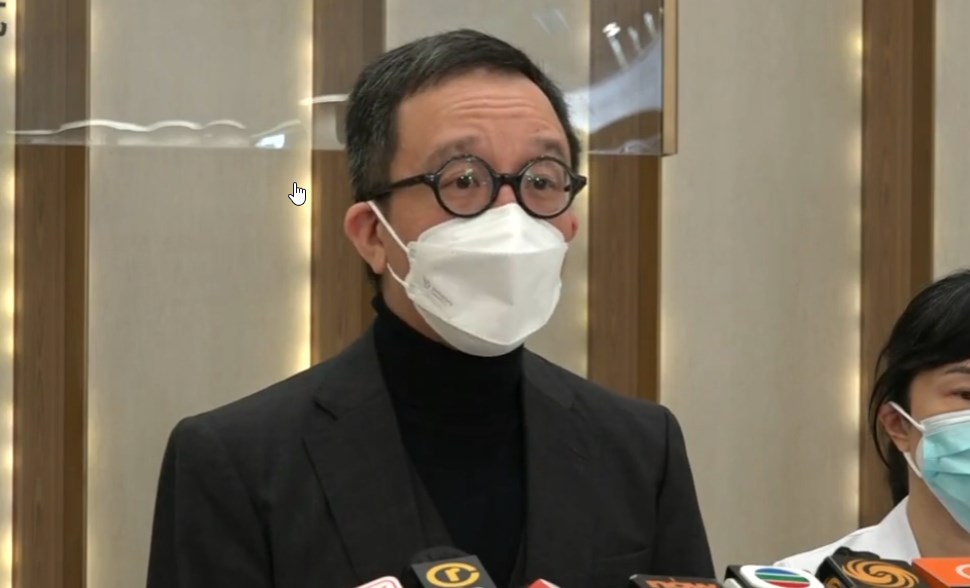
Leung did not address the latter half of FactWire’s question on the impact of Sinovac uptake on Hong Kong protection levels, stating only that individuals were free to choose a vaccine after considering “whether they would like to be protected from infection” in addition to being protected from severe illness and death. The choice should also be “based on personal health conditions.”
FactWire forwarded a similar inquiry in writing to Leung yesterday but has, at the time of writing, received no response.
The T-cells mentioned by Leung are a type of white blood cell that kills cells infected by intracellular pathogens, including viruses like Covid-19, and may thus be able to prevent severe illness and death that would otherwise be brought on by Covid-19. David Hui, Chairman of CUHK’s Department of Medicine and Therapeutics and member of the government’s Covid-19 advisory panel, co-authored a study suggesting that recipients of Sinovac saw a greater T-cell response than BioNTech recipients.
Benjamin John Cowling, a co-director of the WHO Collaborating Centre for Infectious Disease Epidemiology and Control and Chair of Epidemiology in HKU, told FactWire that it is reasonable for a vaccination programme to prioritise reducing severe illness rather than preventing mild infections.
However, “vaccinations that limit severe disease but not infections will not be able to contribute to containment but instead would be considered part of a mitigation strategy,” he said.

When asked to comment on the effect of nearly 40 per cent of the populace choosing Sinovac as their booster, Cowling said that he was glad that a choice is available. He recommends a preference for the BioNTech vaccine, with Sinovac as a second choice and preferable to remaining unvaccinated.
In a scenario where all the boosters given were of BioNTech, and if 95 per cent of Hong Kong’s population were to receive at least two doses of vaccine by the end of April, FactWire estimates that Hong Kong’s overall protection against Omicron infection could reach 47.88 per cent – eight percentage points higher than the coverage provided if both booster options were available.
Given the prediction that 95 per cent of people will have received all three doses by the end of October, the protection rate could reach 61.87 per cent – but only if BioNTech was the only vaccine used as a booster. This is nine percentage points higher than the estimate based on the current arrangement, where both booster options are available.
Had BioNTech been the only vaccine offered in Hong Kong since the beginning of its vaccination programme, a protection rate of 56.93 per cent would have been achieved by the end of April, and would have reached 77.4 per cent at the end of October.

The international community has yet to come to a consensus as to the percentage of a population that has to be immunised to achieve herd immunity to Covid-19. The WHO says that the percentage of people who need to be immune, either by vaccination or recovery from prior infection, varies with each disease.
Herd immunity against measles requires about 95 per cent of a population to be vaccinated. For polio, the threshold is about 80 per cent.
Study shows BioNTech booster more effective
The HKU report along with other local and international studies suggest that Sinovac is not effective enough to combat Omicron, the current dominant strain of Covid-19 across the world and in Hong Kong.
A paper co-written by teams from Oxford University and Brazil’s Ministry of Health, published last month, found that only 14 per cent of samples taken from subjects vaccinated with two doses of Sinovac six months ago were found to contain enough neutralising antibodies to protect against Omicron infection.
Over 90 per cent of those receiving AstraZeneca, BioNTech or Jassen boosters met this antibody threshold, but of those who had received three doses of Sinovac, only 35 per cent met the threshold. This translates to a 55 percentage point decrease in protection for those who opt for the Sinovac booster, as opposed to the AstraZeneca, BioNTech or Jassen boosters.
In a joint HKU and CUHK study published in December last year, antibody levels in people who were vaccinated in the previous three to five weeks were analysed. Results show that levels of antibodies to protect from Omicron infection were insufficient both in recipients of two Sinovac doses and two BioNTech doses. However, results also show that a booster shot is effective, and that the type of booster makes a significant difference.
Among those vaccinated with three doses of BioNTech, 22 out of 25 subjects’ antibody levels were high enough to provide protection against the Omicron variant. 80 per cent of Sinovac-Sinovac-BioNTech recipients had enough antibodies. Only one out of 30 subjects who received three Sinovac doses were able to pass that standard.

In fact, studies found that those who had been inoculated with Sinovac saw a more significant decline of antibody levels over time than those who had received other vaccines.
In the aforementioned study jointly conducted by HKU and the Red Cross Blood Transfusion Service, 850 fully-vaccinated blood donors’ antibody levels were analysed. Although the antibody levels of samples from both Sinovac and BioNTech recipients declined over time, it was a bigger issue for the Sinovac recipients, owing to the lower levels of antibodies that Sinovac produces.
Antibody levels in all BioNTech samples remained above the threshold set in the study even six months after the second dose was given. Meanwhile, antibody levels in Sinovac samples were, on average, only 60 per cent of BioNTech’s immediately after injection. Antibody levels in 96.5 per cent of the CoronoVac samples met the threshold in the initial course, but only 60.9 per cent passed that threshold after three months, and just 16.7 per cent after six months.
This means that by the six-month mark, only one person in every six who had received Sinovac would have had enough antibodies to protect against infection.
The Hong Kong Sanatorium and Hospital published a similar study last year which evaluated the decline in antibody levels of about 300 vaccinated healthcare workers. Three months after vaccination, only 62.4 per cent of Sinovac recipients had neutralising antibody levels that met the infection protection threshold. That percentage is similar to the 60.9 per cent figure produced by the joint HKU and Red Cross study.
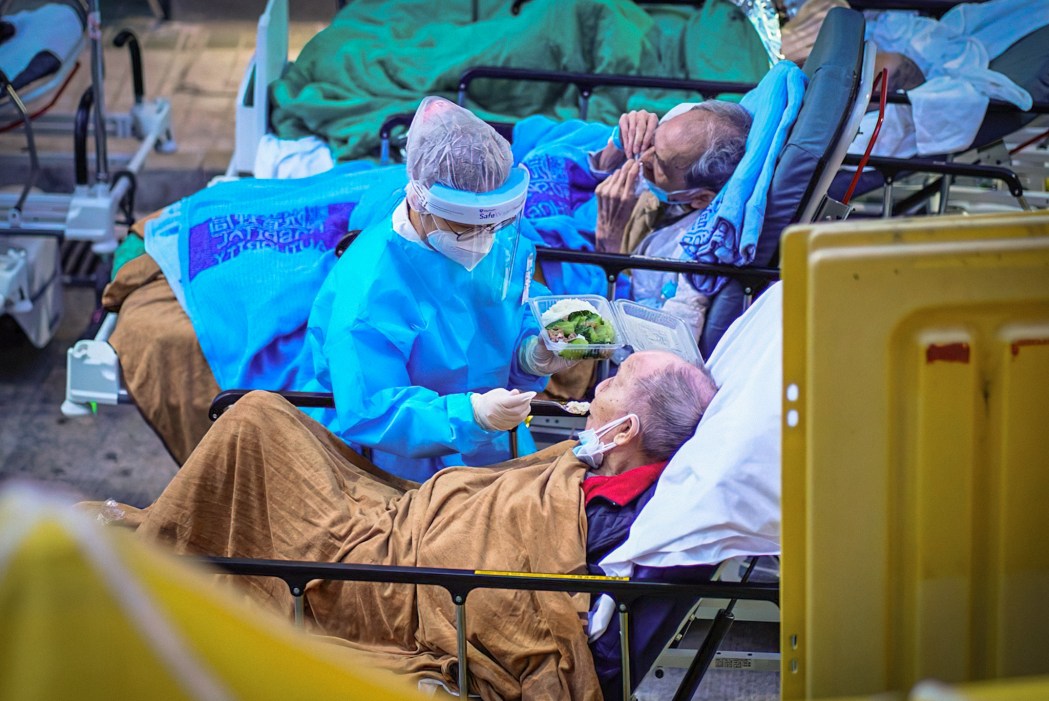
Another study from HKU and CUHK, published in October last year, concluded that neutralising antibody levels in only 16.3 per cent of two-dose Sinovac recipients remained above the threshold after six months. These results are consistent with that of the aforementioned Oxford study – 14 per cent – and the study by HKU and Red Cross – 16.7 per cent.
FactWire posed the following questions to the Department of Health last Wednesday: Has the government made any predictions on the city’s protection rate against Covid-19 infections, based on current vaccination statistics? Does the government think that the protection rate is enough to contain the spread of the virus? Is there a need to raise the protection rate in order to achieve “dynamic zero?” Will the government require three-dose-Sinovac recipients to receive an additional BioNTech booster?
No reply was received at the time of publication.
Support HKFP | Policies & Ethics | Error/typo? | Contact Us | Newsletter | Transparency & Annual Report | Apps
Help safeguard press freedom & keep HKFP free for all readers by supporting our team


